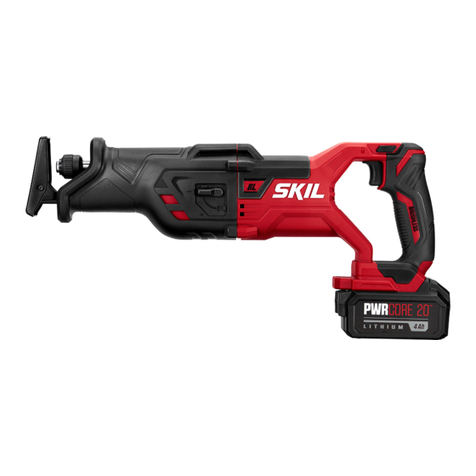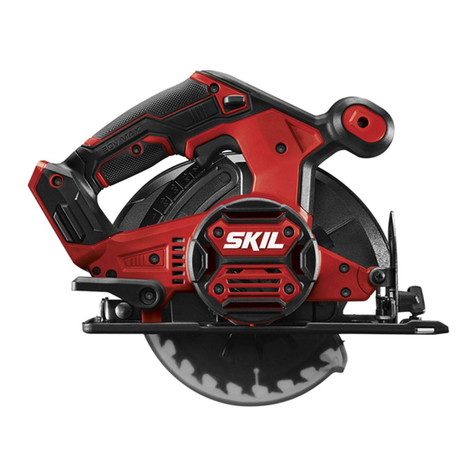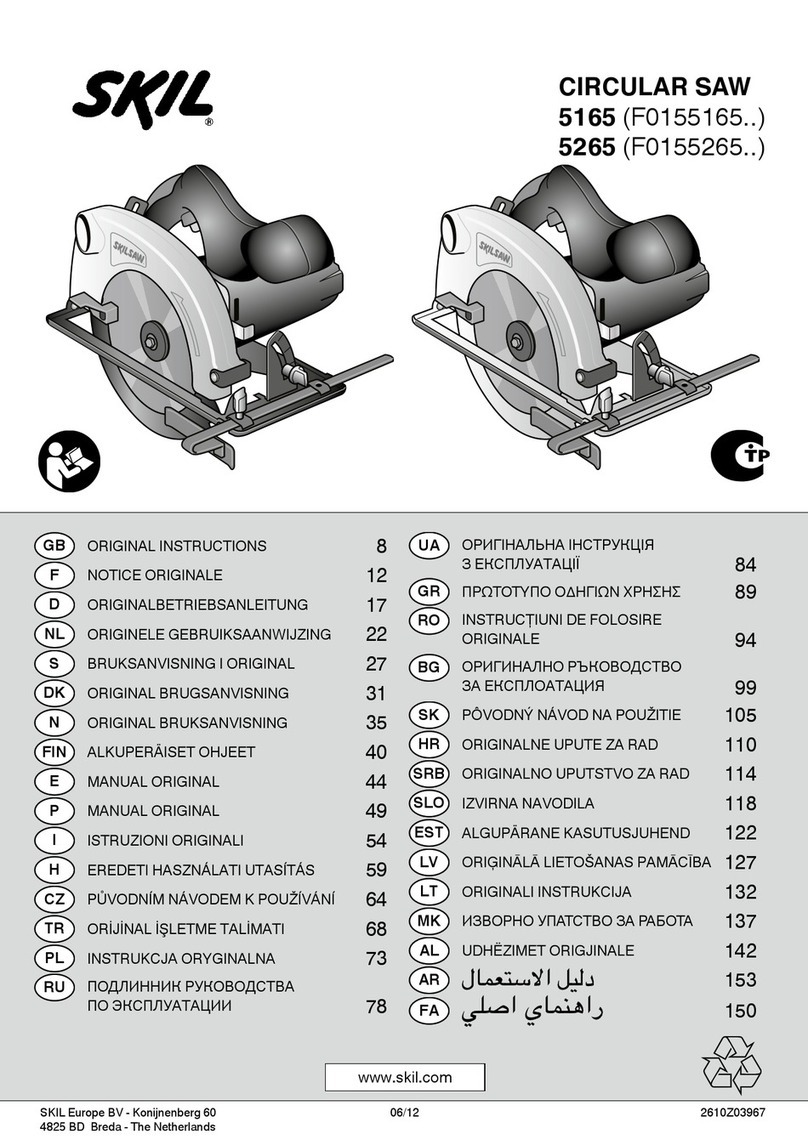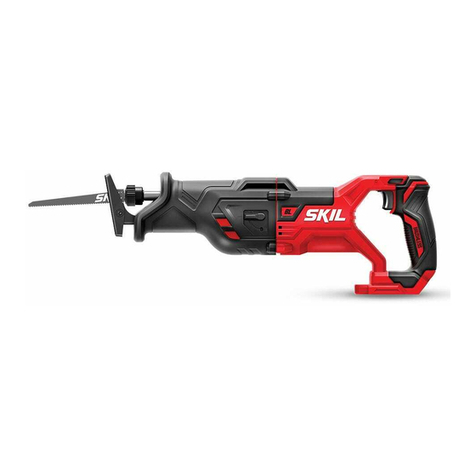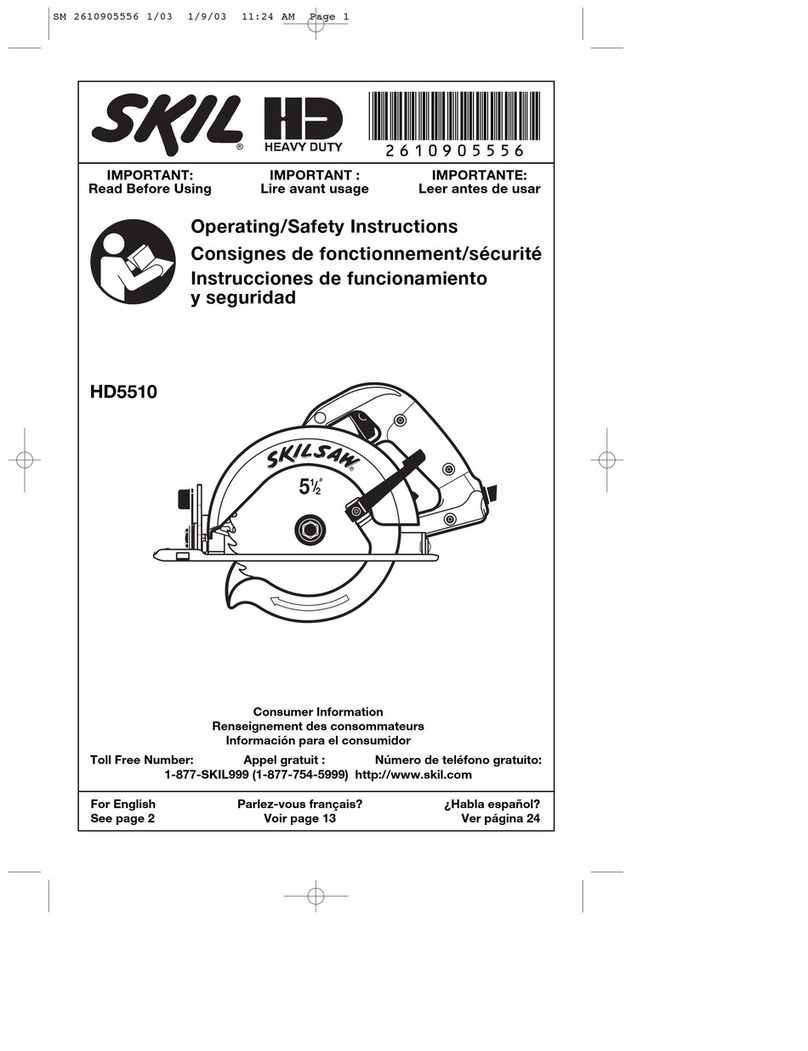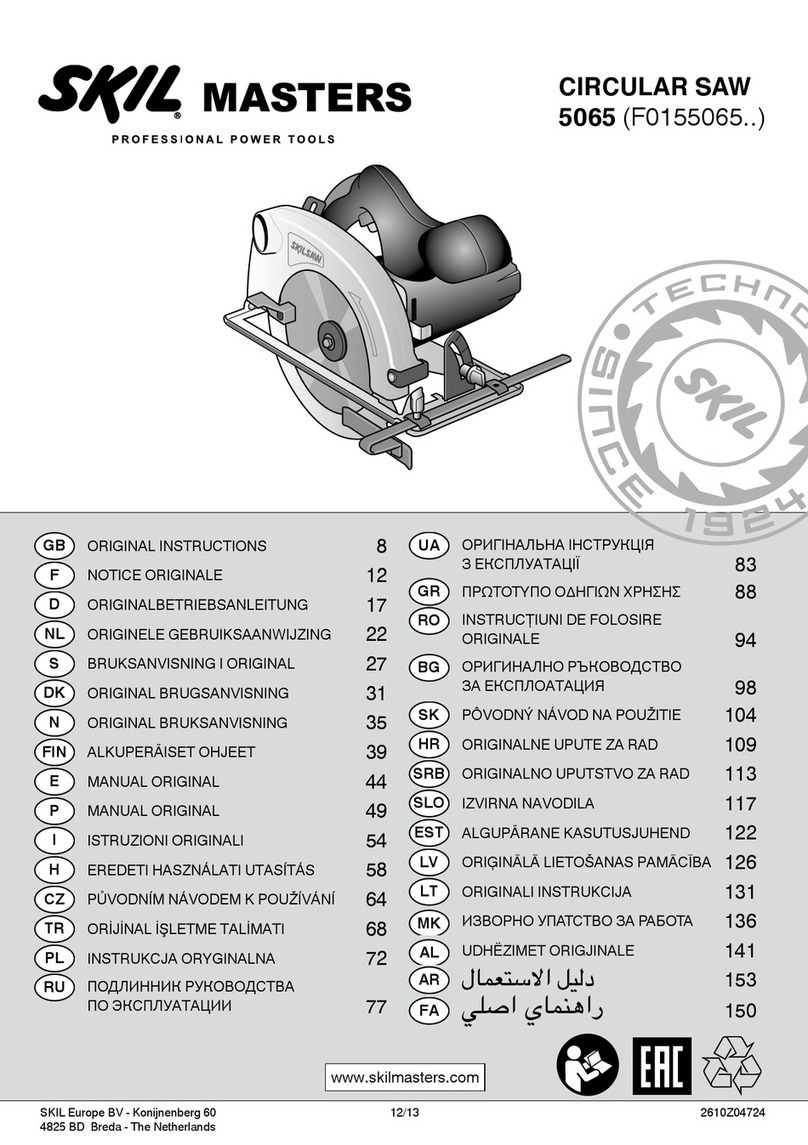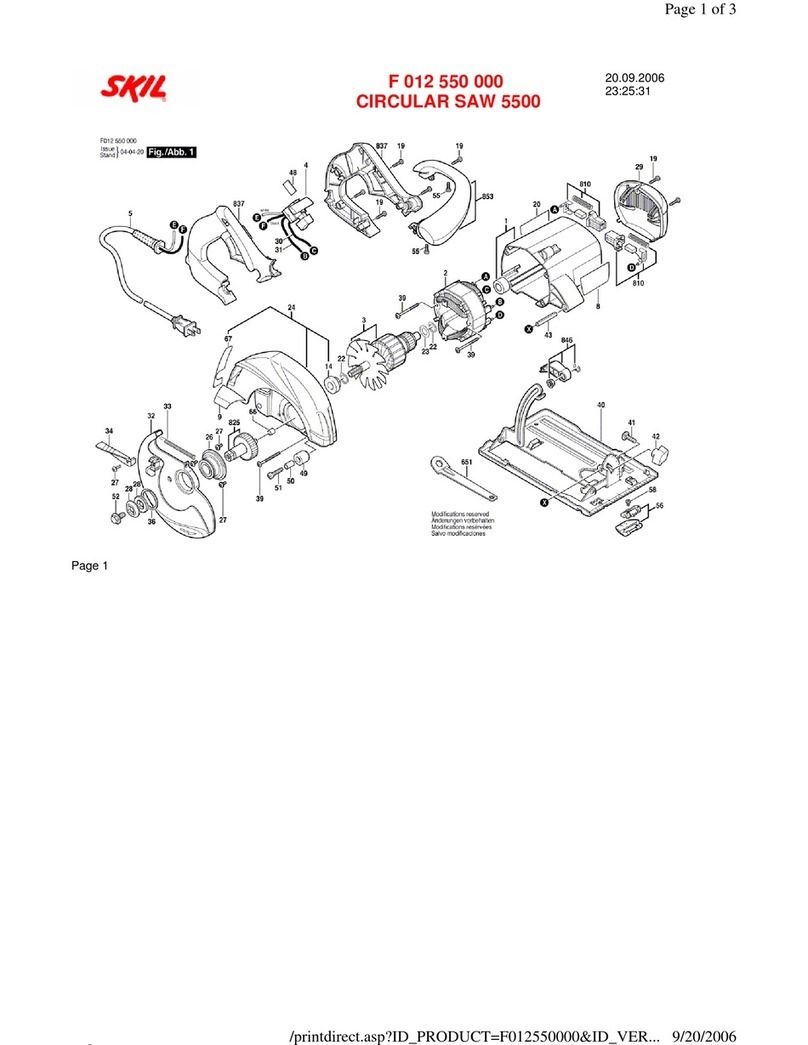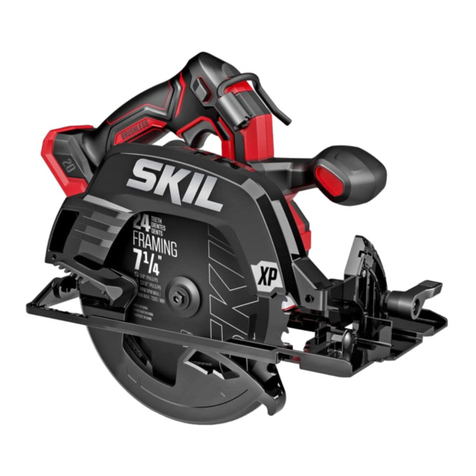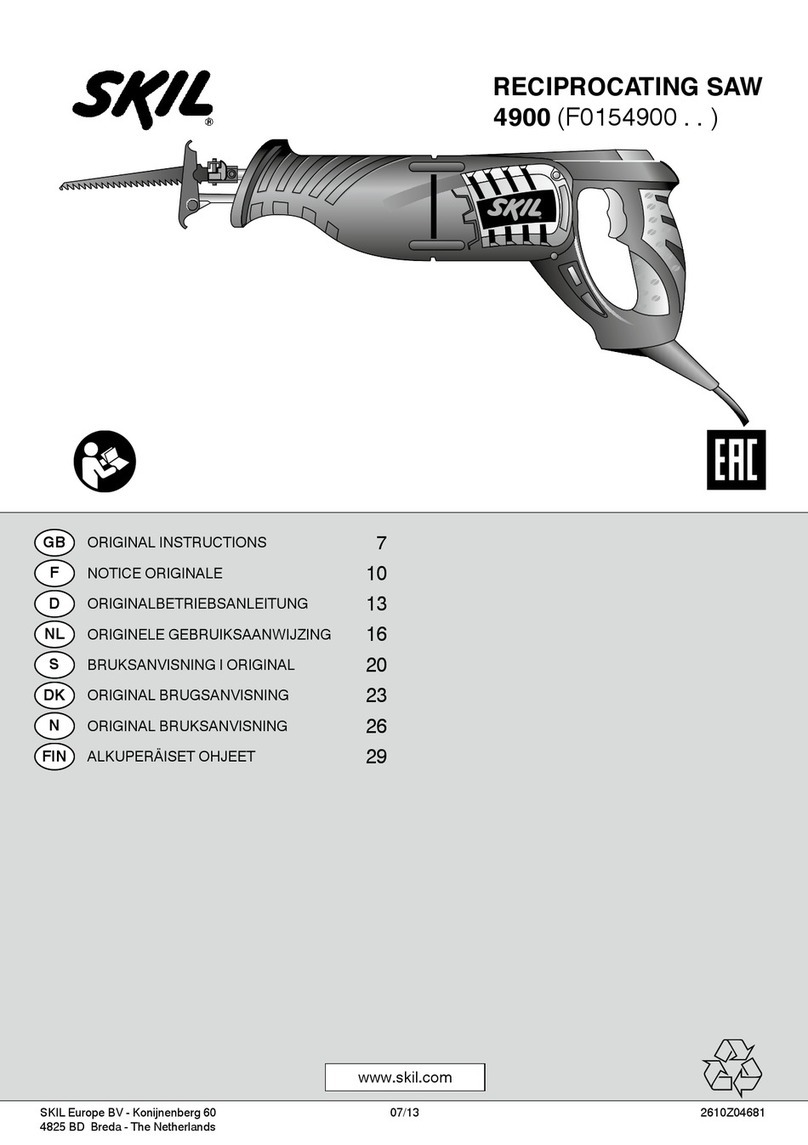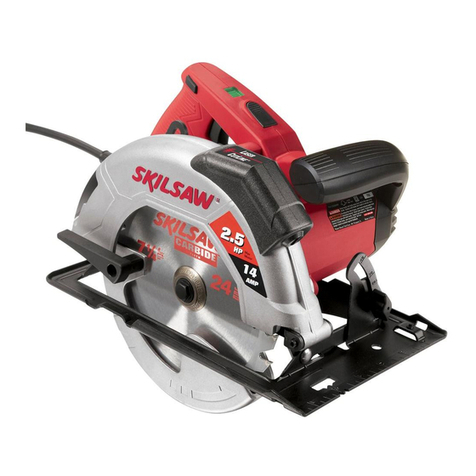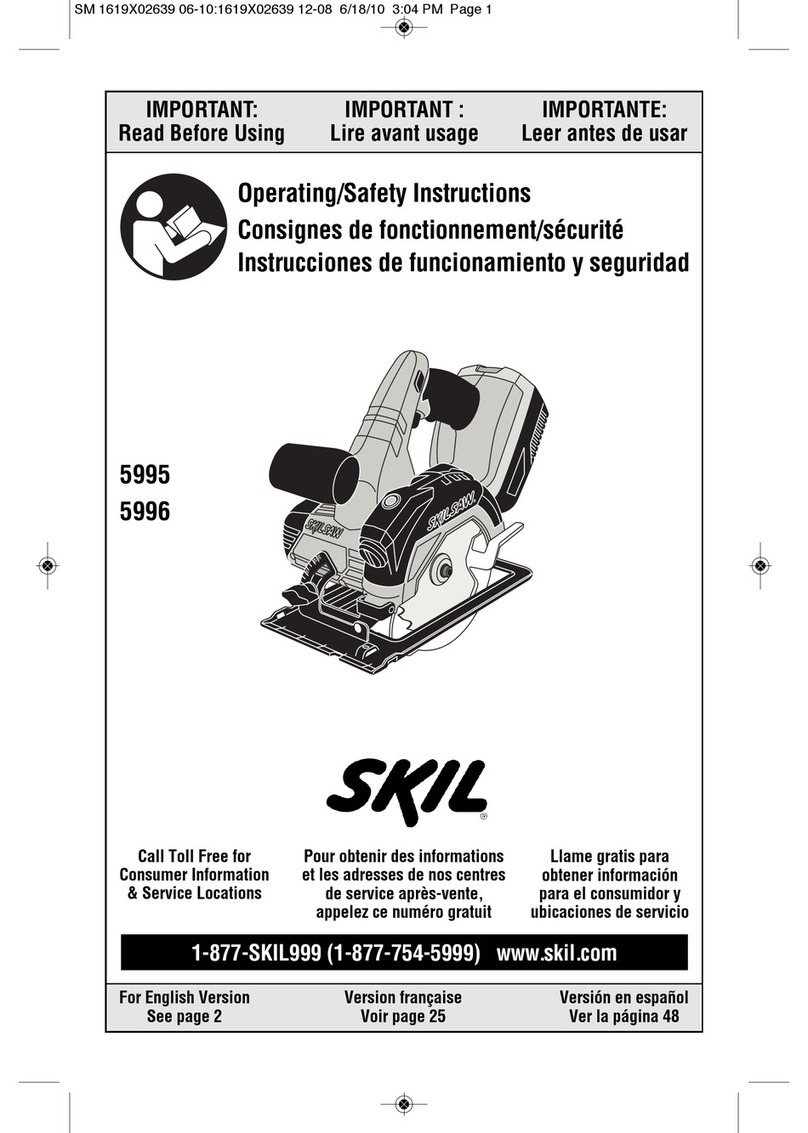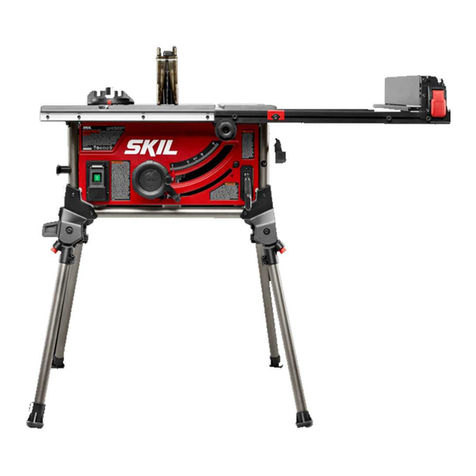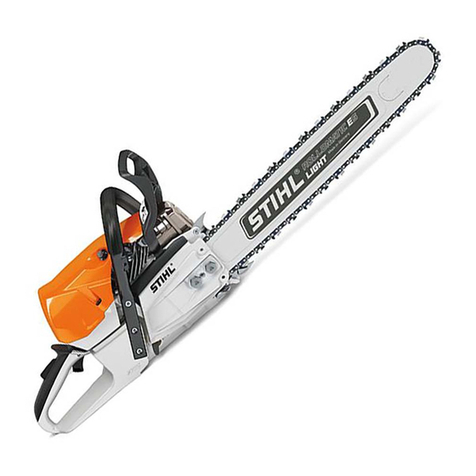9
c) Disconnect the plug from the power source and/or
the battery pack from the power tool before making
any adjustments, changing accessories, or storing
power tools. Such preventive safety measures reduce
the risk of starting the power tool accidentally.
d) Store idle power tools out of the reach of children
and do not allow persons unfamiliar with the power
tool or these instructions to operate the power tool.
Power tools are dangerous in the hands of untrained
users.
e) Maintain power tools. Check for misalignment or
binding of moving parts, breakage of parts and any
other condition that may affect the power tool’s
operation. If damaged, have the power tool repaired
before use. Many accidents are caused by poorly
maintained power tools.
f) Keep cutting tools sharp and clean.
Properly maintained cutting tools with sharp cutting
edges are less likely to bind and are easier to control.
g) Use the power tool, accessories and tool bits etc.,
in accordance with these instructions, taking into
account the working conditions and the work to be
performed. Use of the power tool for operations
different from those intended could result in a
hazardous situation.
5) SERVICE
a) Have your power tool serviced by a qualified repair
person using only identical replacement parts.
This will ensure that the safety of the power tool is
maintained.
SPECIFIC SAFETY INSTRUCTIONS FOR SPIRAL SAWS
A) The outside diameter and the thickness of your
accessory must be within the capacity rating of your
power tool. Incorrectly sized accessories cannot be
adequately guarded or controlled.
B) Wear personal protective equipment 4. Depending
on application, use face shield, safety goggles or
safety glasses. As appropriate, wear dust mask,
hearing protectors, gloves and shop apron capable
of stopping small abrasive or workpiece fragments.
The eye protection must be capable of stopping flying
debris generated by various operations. The dust mask
or respirator must be capable of filtrating particles
generated by your operation. Prolonged exposure to
high intensity noise may cause hearing loss.
C) Keep bystanders a safe distance away from work
area. Anyone entering the work area must wear
personal protective equipment. Fragments of the
workpiece or of a broken accessory may fly away and
cause injury beyond the immediate area of operation.
D) Hold the power tool only by the insulated gripping
surfaces when performing an operation where the
cutting tool may contact hidden wiring or its own
power cord. Contact with a “live” wire will also make
exposed metal parts of the power tool “live” and shock
the operator.
E) Position the cord clear of the spinning accessory.
If you lose control, the cord may be cut or snagged and
your hand or arm may be pulled into the spinning
accessory.
F) Never lay the power tool down until the accessory
has come to a complete stop. The spinning accessory
may grab the surface and pull the power tool out of
your control.
G) Do not run the power tool while carrying it at your
side. Accidental contact with the spinning accessory
could snag your clothing, pulling the accessory into
your body.
H) Regularly clean the power tool’s air vents.
The motor’s fan will draw the dust inside the housing
and excessive accumulation of powdered metal may
cause electrical hazards.
I) Do not operate the power tool near flammable
materials. Sparks could ignite these materials.
GENERAL
• This tool should not be used by people under the age of
16 years
• Only use this tool for applications without the use of
water
• Always disconnect plug from power source before
making any adjustment or changing any accessory
• Protect accessories from impact, shock and grease
ACCESSORIES
• Only use the original accessories supplied with the
tool (2610950521 & 2610942614); damage due to the
use of non-original accessories will be excluded
from the warranty
• SKIL can assure flawless functioning of the tool only
when the correct accessories are used which can be
obtained from your SKIL dealer
• Use only accessories with an allowable speed matching
at least the highest no-load speed of the tool
• Do not use damaged or deformed cutting bits
• Only use sharp cutting bits
• Cutting bits become hot during use; do not touch
them until they have cooled down
• Handle the sharp cutting bits with caution
• Only use cutting bits of 4 mm (5/32”) Ø
OUTDOOR USE
• When used outdoors, connect the tool via a fault current
(FI) circuit breaker with a triggering current of 30 mA
maximum, and only use an extension cord which is
intended for outdoor use and equipped with a
splashproof coupling-socket
BEFORE USE
• Always check that the supply voltage is the same as the
voltage indicated on the nameplate of the tool (tools
with a rating of 230V or 240V can also be connected to
a 220V supply)
• Do not work materials containing asbestos (asbestos
is considered carcinogenic)
• Secure the workpiece (a workpiece clamped with
clamping devices or in a vice is held more securely than
by hand)
• Use completely unrolled and safe extension cords with
a capacity of 16 Amps (U.K. 13 Amps)


